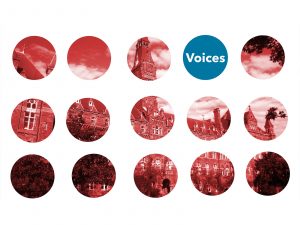A few weeks ago, I brought a friend to a delightful reception celebrating the Lunar New Year at the Smithsonian American Art Museum. A lion dance troupe broke out the drums, the attendees broke out the smartphones, and someone from the Chinese embassy broke out the cabbage for small children to throw at the furry lion costumes. As we followed a bunch of sweaty men in glittering lion-print pants, my friend made the following remark:
“This is the most multiracial lion dance performance I’ve ever seen.”
Indeed, nobody in that lion dance troupe seemed to be of East Asian descent. There were plenty of black, white, and brown faces—but no Chinese faces. Nonetheless, for a city whose Chinatown has been, and still is, rapidly dying from gentrification, seeing such a lion dance performance in the heart of D.C.—albeit at a private event—was impressive.
The term “cultural appropriation” comes to mind when performances of culture cross color lines. The Asian American spheres of the Internet have, at various times, pointed out the modern absurdity of white fashion models in yellowface, white actors playing Asian characters, and white magazine editors telling its readers how to eat pho.
“Cultural appropriation” has perhaps gone through one too many wash cycles in the social justice machine, emerging a dirty phrase now often accompanied by groans about millennial snowflakes not accepting life’s harsh realities. But that reality behind the term is harsh, drawing on centuries of European colonial empires looting, stealing, trading, buying, and exchanging all manners of tangible cultural heritage from the peoples they encountered. The idealists among us refuse to accept a Hollywood that marginalizes non-white actors, a notion of romance that portrays Asian women as exotic sex toys, or a culinary culture that ignores the alien until it’s placed on faux-wood tables with twenty Instagram edits, to name a few examples of such appropriation.
Embedded in the talk of all the racist harm that “cultural appropriation” perpetuates is the idea of ownership; the term explicitly connotes the divorcing of some form of property from its original context while simultaneously taking credit for and gaining from its inception. Beyond simply calling out the phenomenon as racist, perhaps the more interesting questions, to me, are: what exactly are we trying to protect from appropriation, who has the right to provide that protection, and how do you gain that right in the first place?
Take, for example, the matcha at Grace Street Coffee, an establishment by the waterfront that “brings some much-needed ‘hipster’ flair” to Georgetown, as this very newsmagazine puts it. In my first and only visit a handful of months ago, I noticed a chasen, or bamboo tea whisk, sitting naked and lonely behind the barista’s counter.
If the Japanese tea ceremony is an art form, then the presence of only the tea whisk and the absence of its associated arts—the calligraphy scrolls that encourage reflection, the tea bowls that inspire admiration, and the sweets that exemplify a gracious and humble hospitality—was, for me, an immediate abnormality. During my brief time at Tokyo’s Waseda University’s tea ceremony club, before even gaining the privilege to touch a chasen, I had to learn how to hold a bowl, how to receive the tea, how to walk respectfully and sit quietly, how to fold pieces of cloth, and how to memorize complicated descriptions of what the tea was. Only then, three excruciating months later, could I host my own form of an abbreviated ceremony under the watchful eye of my superiors in the club (although hampered with errors and a deep absence of self-confidence).
It is disappointing that the easiest way for anything to become mainstream is to dilute a foreign high culture into a mass market caffeinated flavor powder. In wanting to provide customers with a more authentic matcha experience, Grace Street Coffee divorced it from its contextual origins in the art of tea. Nonetheless, such a rant would privilege purity and exclusivity as desirable attributes for cultural products. Doing so problematizes the concept of critiquing cultural appropriation altogether. There is evidently no singular way to enjoy tea as a beverage of hospitality, or even one definitive way for the Japanese tea ceremony to proceed. And if the Japanese exercised exclusive ownership over how matcha is consumed around the world, then perhaps even my presence in Waseda University’s tea ceremony club, by virtue of my non-Japanese ethnicity, is a vile contamination of foreign influence on such an esteemed art.
Using the same logic, I would even challenge whether I had the right to question Grace Street Coffee’s matcha-making methods, as I myself was appropriating Japanese matcha culture for my self-benefit—to become a spokesperson on behalf of something that I don’t own. This is the crux of what Naomi Mezey, a professor at Georgetown Law, calls the “paradox” of seeing culture as property: “Aided and abetted by multiculturalism and the recognition of difference, cultural property has popularized a logic that tends to forcefully align ‘cultures’ with particular groups.” Thus, the rhetoric of purity and exclusivity in cultural appropriation inhibits the dynamism of cultural properties that we should share with one another.
It would be a shame for the fear of white normative culture colonizing the exotic to paralyze our appetite to make ourselves guests to the foreign. A starting point to end this dilemma requires humility and respect. If we wish to stop repeating the humiliation that cultural appropriation has brought to those in the underside of history, we should also strive to share human ingenuity with one another. Otherwise, there may no longer be any lion dance troupes in Washington, D.C.
Kenneth is a senior in the SFS.





